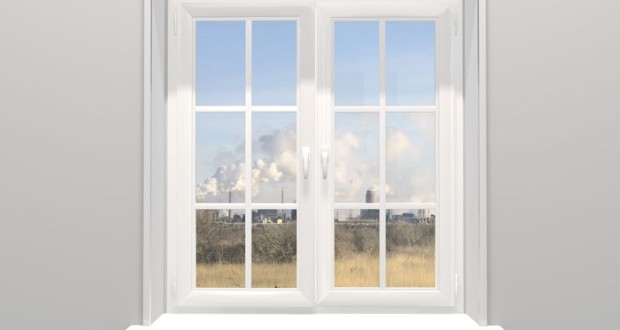When the topic of air pollution comes up, most people think of pollutants pushed into the atmosphere from the factory smokestacks. While outdoor pollution is certainly a major concern for industrialized and developing nations alike, it would be a mistake to ignore the unhealthy chemicals floating around inside your own home. According to the United Nations, indoor pollution kills more people worldwide than both AIDS and malaria. Though this problem is not as pronounced in wealthier countries like the United States, it is still worth familiarizing yourself with the atmospheric pollutants commonly found inside houses.
The List of Offenders
At the risk of sounding painfully obvious, it is impossible to do anything about indoor irritants if you know nothing about them, including their names. Below are some of the most potent menaces that fester inside homes, apartments and other buildings.
Formaldehyde – Even if you know nothing about formaldehyde, its name alone suggests that it can be very harmful to the human body. When exposed to unhealthy amounts of this colorless, foul-smelling gas, people tend to experience wheezing, coughing, fatigue, skin rash and other allergic symptoms. Most alarmingly, recent studies have linked formaldehyde exposure to an elevated risk of cancer.
Despite its potential risks to human health, you don’t have to look very hard to find a product containing at least trace amounts of formaldehyde. This chemical compound is used to make plywood, particle board, synthetic fabrics, shampoos and cosmetic products. The amount of formaldehyde considered dangerous for an indoor atmosphere is 0.1 ppm (parts per million of air).
Asbestos – Asbestos is a naturally occurring fibrous material, mined straight from the earth’s crust. From the middle of the twentieth century to roughly 1990, this material was frequently used in the construction of new houses. In older homes, it is not uncommon to find asbestos in columns, beams, linoleum tiles and in the coatings of walls and ceilings. Asbestos was also used to make the layers of insulation that surround boilers, pipes, tanks and vessels.
When these household building materials are cut, sanded or otherwise altered by remodeling, microscopic asbestos fibers are released into the air. If a person inhales significant quantities of these fibers, he or she is put at risk of contracting several deadly diseases, such as asbestosis, mesothelioma and lung cancer.
Combustion Pollution – It’s hard to imagine living in a house without a working furnace, stove and water heater. Without these machines, it would be impossible for us to enjoy warm water, cooked food or warm indoor temperatures during the frigid winter months. Unfortunately, a fair amount of homeowners fail to keep these devices in good standing, causing them to emit distressing amounts of carbon monoxide (CO) and nitrogen dioxide.
Both of these gases make for imposing opponents: once inside the lungs, carbon monoxide causes the victim to suffer from headaches, confusion, dizziness, nausea and dizziness. Exposure to exceptionally large amounts of CO can be fatal. For its part, nitrogen dioxide inhalation can irritate the eyes, nasal passages and throat, and may lead to shortness of breath and various infections.
Radon – This author isn’t a betting man, but would still be willing to wager that you have never heard of radon, a radioactive gas produced naturally in the earth’s soil. Despite its obscurity, radon should not be taken lightly, as it claims the dubious honor of being the second-leading cause of lung cancer in the United States. It is estimated that 15,000 to 22,000 Americans annually succumb to lung cancer directly caused by radon exposure. Making radon even more dangerous is its inherently stealthy nature; radon has no color, odor or taste, rendering it all but invisible inside the home.
Keeping Your House Safe
Though multiple irritants can secretly pollute the interior of your house, cleansing your home of these threats is hardly an impossible task. If you are concerned about the quality of the air you breathe inside your home, try giving the following clean-up tips a chance.
- Get rid of all products that contain formaldehyde, including nail polishes, detergents and cleaners.
- Apply multiple layers of urethane or varnish to products made with composite wood (composite wood is produced by altering and combining certain wood fibers, strands, particles and veneers). This should help prevent formaldehyde exposure.
- Repair damaged heaters, stoves and ventilation systems inside your home
- If they don’t already have them, attach ventilation hoses to devices that emit combustion pollution, such as stoves and gas ovens.
- As surprising as it may sound, permanent press clothing and home décor fabrics often contain formaldehyde. Fortunately, these products can be sterilized through a simple run in the washing machine.
- It’s easy to overlook door mats – we walk right over them, after all. Though they might not receive much in the way of attention, door mats actually play a significant role in keeping hostile invaders out of your home. While rummaging around outdoors, our shoes tend to pick up all sorts of unpleasant hangers-on, such as dirt and pesticides. An appropriately sized door mat allows for you and your guests to check these undesirable pests at the door.
- Asbestos-laced materials can be removed by professional asbestos removal services.
- Harmful household toxins can accumulate unnoticed over the course of several decades. Vacuum cleaners equipped with high-efficiency particulate air (HEPA) filters can make quick work of these particles.
- Test for radon inside your home. These tests require very little effort to conduct. After collecting the appropriate amount of data, radon testing kits are usually sent to laboratories. Soon afterward, the customer will receive notice as to the results of the test.
 Natural Knowledge 24/7 Educate yourself with nutrition, health and fitness knowledge.
Natural Knowledge 24/7 Educate yourself with nutrition, health and fitness knowledge.






